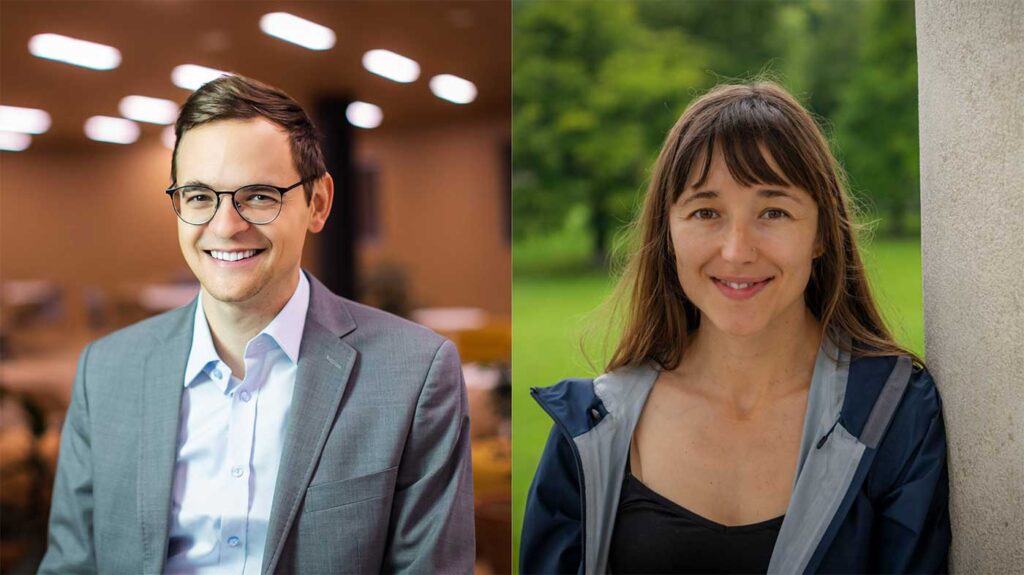Khoury News
Want to optimize scheduling in high-stress nursing work? Look to dragonfly swarms
Using an algorithm inspired by insect behavior, a team of Khoury graduate students in Vancouver set out to solve a problem plaguing countless health care workers around the world.

Anyone who’s ever held a job in a shift-work environment knows the trials of creating a schedule that suits everyone’s needs. This struggle is even more pronounced for nurses, who are in demand 24 hours a day in hospitals that are often understaffed.
That’s why the nurse scheduling problem is an internationally studied subject, one that has become increasingly urgent since the COVID-19 pandemic overtaxed and reshaped the health care industry. To address this issue, visiting professor of computer science Michał Aibin advised a group of graduate researchers on Khoury College’s Vancouver campus on a paper that looked for a solution rooted in machine learning. This team included Arghavan Ayoughi, Chi Zhang, Stephen Okeleke, Shufei Li, Wei Xin, and Yuhan Yue, all of whom have since graduated.
The nurse scheduling problem first came to Aibin’s attention through his wife, Ania Aibin, a registered nurse and faculty member at the British Columbia Institute of Technology who also worked on the paper. Aibin’s research typically focuses on natural resources monitoring through computer vision and drones, but Ania Aibin’s connection to the healthcare industry provided the opportunity for “multi-institutional collaboration” on research that combines her firsthand knowledge of nurse scheduling difficulties with the potential innovations provided by computing.

“Roster scheduling is a huge problem because quite often [hospitals] use an Excel spreadsheet with some formulas and try to allocate people by traditional methods, and there’s a lot of unsatisfied personnel,” Aibin said. “That’s the main reason we tried to use additional methods to optimize this project problem at a large scale.”
After testing several algorithms on data that imitated the variability of nurse preferences, Aibin and his team settled on the Dragonfly algorithm as the optimal way to balance those preferences into a schedule. The Dragonfly algorithm is a metaheuristic — a system designed to solve an optimization problem by mimicking a natural process.
“In the algorithm, dragonflies are represented as agents that interact through positive behavior, or attraction to food sources, and negative behavior, or repulsion from enemies,” he explained. “We can think about each nurse as a dragonfly, where a better schedule brings the nurse closer to the ‘food source,’ while wrong schedules are like enemies that the nurse tries to avoid.”
To calculate this behavior, the research team incorporated hard and soft constraints into the algorithm. Hard constraints entailed legal or physical impossibilities, such as a nurse being scheduled for both a day and night shift, while soft constraints encapsulated individual preferences, such as a nurse’s desire to work Mondays. Violations of these constraints incurred penalties of differing severity, allowing researchers to measure the success of each simulation. Of all the algorithms tested, the Dragonfly algorithm achieved the quickest optimal result, which was to produce a schedule that adhered to all constraints.
Aibin’s research on the nurse scheduling problem is ongoing. In a forthcoming paper, Federated Learning Framework for Nurse Scheduling to Lower Fatigue Levels of Nurses, he and his wife collaborated with another group of graduate students to devise a scheduling framework that factors in the mental and physical fatigue of nurses. He says this project may be one of the first of its kind in nurse scheduling research.
Though the Dragonfly algorithm hasn’t yet been tested in an organic environment, Aibin is hopeful that machine learning research will not only lead to new solutions for other issues in healthcare, but also that its application can yield real-world change.
“We always look for new problems to be solved, and how we can help build proof of concept to show that improvement and innovation is possible in [health care],” he said. “We aim to imitate the real scenario in a way that it’s possible to transfer to real hospitals.”
The Khoury Network: Be in the know
Subscribe now to our monthly newsletter for the latest stories and achievements of our students and faculty